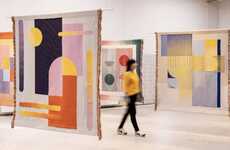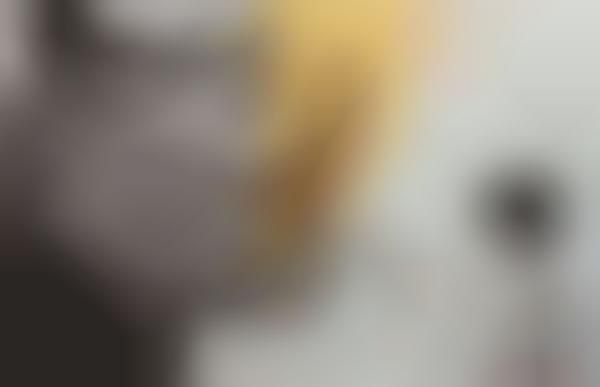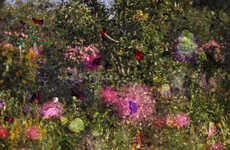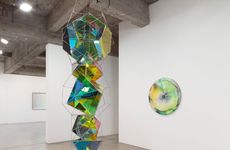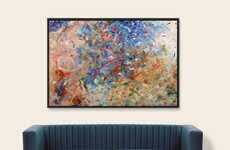
The 'Blind' Series by Roy Nachum Showcases a New Way to View Art
Alexandra Serrano — September 6, 2012 — Art & Design
Representing a dedication to accessible art, the 'Blind' Series by Roy Nachum is visually striking.
These oil paintings are highly realistic in their attention to detail. Superb technical ability is displayed by the artist, who was educated at Cooper Union and Bezalel Academy in Israel. He has earned merit and praise from high-profile fans like singer Justin Timberlake and Topshop mogul Sir Philip Green.
His work utilizes hyper-real canvas paintings that feature braille. The tactile aspect of Roy Nachum's work is for the visually impaired to read poetic descriptions of each painting so as to have his work enjoyed by people from all walks of life. The idea of accessible art is not only groundbreaking, but also makes for a stunning display of inventive art in the oil and canvas worlds.
These oil paintings are highly realistic in their attention to detail. Superb technical ability is displayed by the artist, who was educated at Cooper Union and Bezalel Academy in Israel. He has earned merit and praise from high-profile fans like singer Justin Timberlake and Topshop mogul Sir Philip Green.
His work utilizes hyper-real canvas paintings that feature braille. The tactile aspect of Roy Nachum's work is for the visually impaired to read poetic descriptions of each painting so as to have his work enjoyed by people from all walks of life. The idea of accessible art is not only groundbreaking, but also makes for a stunning display of inventive art in the oil and canvas worlds.
Trend Themes
1. Hyperrealistic Art - Opportunity for artists to create highly detailed and realistic paintings in various mediums, pushing the boundaries of artistic expression.
2. Accessible Art - Disruptive innovation opportunity to create and promote art that is accessible to people with visual impairments, opening up new audiences and perspectives.
3. Tactile Experiences - Innovative approach to incorporate tactile elements into art, allowing for a multi-sensory experience and engaging a wider range of senses.
Industry Implications
1. Art - Opportunity for artists, galleries, and museums to embrace accessible art and cater to diverse audiences, creating inclusive and meaningful experiences.
2. Technology - Innovative technologies like 3D printing and haptic feedback systems can be applied to enhance tactile art experiences for people with visual impairments.
3. Fashion - Collaborations between artists and fashion designers can explore incorporating braille and tactile elements into clothing and accessories, blending art and fashion in unique ways.
4.6
Score
Popularity
Activity
Freshness





